February 10, 2023

Joshua Moore
Performance Characterization of Air Breathing Electric Propulsion
Electric propulsion (EP) thrusters utilize electric and magnetic fields to accelerate propellant ions in their plasma to generate thrust. These thrusters have been rapidly growing in demand, especially in the low-Earth orbit (LEO) satellite market. With this growing demand, traditional propellants such as Xenon gas have become prohibitively expensive, imposing a barrier on cost-effectiveness and life span. Air breathing electric propulsion offers a great solution to this problem, allowing potentially limitless propellant supply. This project is interested in investigating the viability of using particles of nitrogen and oxygen present in LEO as a propellant in traditional EP systems. The presented work focuses on simulating the LEO environment and verifying that existing thrusters can operate with the available gas mixture. The work also developed methods for testing propellant intake geometries used to collect the available particles while on orbit.

George Blackwell
SysML 101/201 and Launch Vehicle Sizing
The presentation will cover tutorials and research completed in Systems Modeling Language (SysML). The NASA concept vehicle Habitable Mobility Platform was modeled while learning SysML modeling for space applications. A Matlab program was developed to size to estimate the weight of a reusable single stage to orbit (SSTO) launch Vehicle.

Kylie Phelps
Comparing Resupply Strategies of Satellite Constellations When Considering Different Failure Distributions
One major question that arises when designing large satellites constellations, is how to resupply satellites that have failed. The intent of this research was to explore how a satellite infant mortality failure rate model compares to a uniform failure rate. This was done by creating a simulator in MATLAB that that models various spare resupply strategies using the two failure models described. The resilience of the various spare strategies were evaluated based off the calculated total cost and the constellation’s performance over mission lifetime.
February 17, 2023

Mollie Johnson
Mission Assurance for NASA JPL's Lunar Flashlight Mission
NASA missions are complex and high-stakes endeavors that require careful planning and execution to ensure success. Mission assurance is a critical aspect of these missions, as it is responsible for reducing risk, improving quality, and enhancing reliability. This presentation will explore the importance of mission assurance particular to the NASA JPL Lunar Flashlight mission and how it contributes to mission success. We will cover the key elements of mission assurance, including: fault protection, safe operator practices, and risk management as applied to Lunar Flashlight.

Ryan T. Wijaya
Current Developments of a Multi-Disciplinary Hypersonic Design Framework
In recent year, steady capital investment towards the development of novel hypersonic systems is increasing to compete with international competition and satisfy projected demands. As a contribution towards these developments, the Aerospace System Design Laboratory is developing a multidisciplinary design framework to analyze hypersonic vehicle concepts. The speaker will talk about current capabilities of the developing framework, mainly around parametric surrogate model generation, coupled analysis for weight estimation and sensitivity, and high mach engine cycle analysis.

Spencer Baird
B-Dot Attitude Determination and Control Algorithm for GT-2 CubeSat
Attitude Determination and Control Systems are imperative for any spacecraft, regardless of size or complexity. GT-2, a 1U undergraduate built CubeSat, accomplishes this mission requirement through the use of magnetic spacecraft control. By utilizing Earth’s magnetic field, magnetic torquing devices known as magnetorquers are implemented to create small angular moments on the spacecraft. This efficient and reliable method for spacecraft control is commanded in flight software through an algorithm that relies on the time rate of change of the magnetic field vector B, and is hence known as a B-Dot controller. Although this technique has limitations, the applications and versatility offered to GT-2 with such ADCS capabilities both serve as a technology demonstration and lay the groundwork for potential imaging payloads on GT-3 and beyond.
February 24, 2023

Andrew Semelka
"Kerosene Injection in a Lean Prevaporized Premixed Combustor"
With an expected resurgence of commercial supersonic transportation, new techniques are required to meet the growing demand for safe, efficient, and clean air travel. Lean Prevaporized Premixed combustion is a technique being studied with the potential to reduce CO2, Particulate, and NOX emissions. The characteristics of supersonic transportation address many of the challenges of implementing such a combustor, revitalizing interest in LPP technology. One important aspect to study is how the air fuel mixedness influences the combustion characteristics and emissions profile of the burner. To achieve this, a variable-length premixer was designed with the goal of performing over a wide range of test conditions. Future experiments using this rig will determine the design, feasibility, and impact of large-scale commercial supersonic transportation.

Ari E. Tretiak
"Examining the Operational Capability of Hydrogen Fuel Operation in Fielded Fuel Injectors"
This project is a follow-up to a previous one that tested chemiluminescence and studied the flame transfer function's characteristic using a T70 fuel injector and methane fuel. This project uses a Solar Turbines' Titan 250 fuel injector designed for methane, to test how the flame responds to hydrogen doping with concentrations starting below 30% and gradually ramping up to pure hydrogen operation.

Sparsh Desai
"Development of a Clean Sheet Experimental Combustor for Hybrid Electric Aircraft"
Future aircraft will require innovative propulsion architectures, such as hybrid electric gas turbines, for improvements in emissions and fuel economy. Hybridized propulsion systems impose novel operational constraints for the gas turbine, such as lower turndown ratios or sub-idle operation. Recent system-level studies have shown the feasibility of such architectures, but not the detailed combustor-level considerations. One particularly promising future aviation combustor concept is axially staged partially-premixed fuel injection, which is enabled by advances in additive manufacturing and sustainable aviation fuels. In particular, the success of fuel staging is highly dependent on both the nature of the fuel atomization in the coflowing staged air, and also the mixing of this staged air-fuel mixture into a vitiated crossflow. One facility was designed to study hybridized spray-in-co-flow and spray-in-crossflow configurations and the second facility was to assess the impacts of staged-fueling strategies on key combustor operability and turbine durability metrics, including flame shape, CO and NOx emissions, and turbine inlet temperature pattern. I assisted in research with the first facility, which employed proven high-speed optical diagnostics of the associated fluid mechanics of a potential injector and varying flow parameters, and process the image data that resulted from the experiments. This image processing was done in Python, utilizing blob detection algorithms to determine various flow parameters and nondimensional factors that could characterize the performance of a given injector and flow parameter combination. In the future, this project will continue to evaluate various combinations, with the goal of choosing ideal ranges of values in key parameters, helping progress towards developing the axially staged combustor for hybridized electric gas turbine engines of the future.
March 2, 2023

Mihir Shah
Investigating Aerodynamic and Propulsive Coupling Effects for Electric Ducted Fans
Electric ducted fans (EDF’s) can provide a low noise, efficient, and sustainable power solution for future aircraft. As EDF’s become a more viable option for a growing number of vehicles, it is increasingly important to investigate and understand the interactions between the motor and wing flows and any potential coupling between the propulsive and aerodynamic effects. The development of a full understanding of these interactions requires characterizations of both the motor’s independent flow and the flow that results from the integration of the motor and the wing. This project will use a customized, integrated sensor suite and a six degree of freedom load cell in wind tunnel tests to perform flow characterizations for a variety of EDF sizes and angles of attack in isolated and wing integrated configurations. These data will help to develop an aero propulsive profile which will aid in the integration of EDF’s into future aerospace vehicle designs.

Sam Li
Computational Modeling of a Regeneratively Cooled Nozzle for Nuclear Thermal Propulsion Applications
Nuclear thermal propulsion offers over twice the efficiency of traditional chemical propulsion systems at similar thrust levels, making it an ideal candidate for deep space missions. Instead of heating reactants with a chemical reaction, hydrogen gas is passed through channels in a nuclear reactor before expelled out of a nozzle. The Computational Reactor Engineering Lab has developed a python package, ntpThermo, a thermal-hydraulic engineering tool to aid in the modeling and design of NTP systems. One difficulty encountered with the tool currently is the modeling of a regeneratively cooled nozzle due to flow cycle differences between traditional liquid fueled rocket and NTP systems. This presentation will detail the basic operating principle of NTP as well as the work being done to characterize a regeneratively cooled nozzle for NTP applications.
March 3, 2023

Dev Patel
Landing Gear Selection using SysML for Conceptual Aircraft Design
Model-Based Systems Engineering (MBSE) allows for a more unified approach over traditional systems engineering, focused on a more technical approach to manage the system requirements, analysis, and verification of complex systems. This project focuses on the conceptual design process for aircraft, specifically in the landing gear and tire selection process. This project aimed to develop a system model to track requirements that drive the selection of the landing gear and explore the analysis capabilities. In addition, other aspects of aircraft design, such as weight and balance, can be later integrated into the model.

Markus Perkins
Facility Effects and Setup Implications for Electric Propulsion Testing
As engineers we love to see the magic of electric propulsion, with its efficiency numbers and plasma plumes. What isn't talked about as much is the factors needed to align to fire a thruster and collect information. This seminar will cover the behind-the-scenes work done to have a useful test setup. Different forms of EP have different requirements in order to produce results, and things often go wrong before reaching desired conditions. In HPEPL, the abilities to troubleshoot and adapt are our greatest strengths.

Harrison Zinser
Use of NASA 42 and C++ to Simulate Cube Satellite in Orbit
42 is an open source NASA Goddard tool for simulation and analysis of spacecraft controls. Its use has many practical application for cube sat missions for testing controls and day in the life simulation. Since it is open source it leaves room for development and improvement by the user. Its application for the WEBS cube sat mission allows for testing of various control algorithms and verification of sensor specification viability. The focus of this presentation will be on the implementation of 42 and the WEBS mission.
March 9, 2023
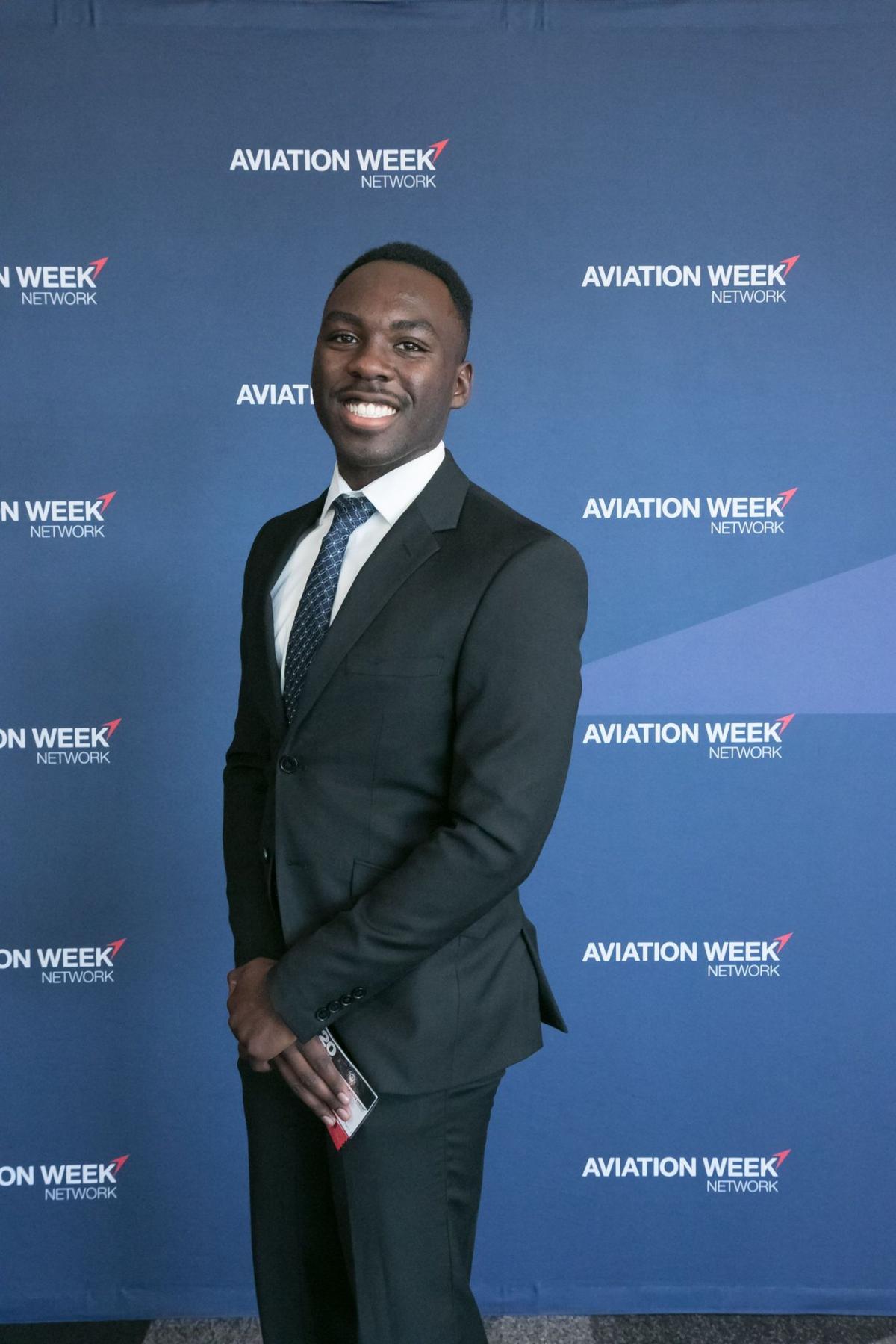
Jesudunsin Awodele
Validation of CFD Solver: Aerodynamic Predictions for 2-D Flows
Generating accurate Computational Fluid Dynamics results is imperative to acquiring reliable data without needing to use a wind tunnel. While the Numerical Aerodynamic Simulation with Cartesian Grid Techniques (NASCART-GT) has the benefit of automatically generating meshes around a geometry, it becomes computationally expensive to run viscous simulations. Implementing the Discontinuous Galerkin method as an extension to NASCART-GT enables faster viscous simulations. To validate this extension, an inviscid exact solution to a Prandtl-Meyer expansion wave was computed to compare the root mean square (RMS) error of the solver with the RMS error of unstructured Ansys Fluent meshes. The RMS was compared as a function of grid density for the two solvers. The results yield that increasing the grid density decreases the error and that NASCART-GT consistently has a lower error than the comparable Ansys Fluent cases.

Todd Goehmann
Streamlining Whirl Flutter Prediction Considering Multiple Varying Parameters
As tiltrotor, urban air mobility, and distributed electric propulsion aircraft become popular, there is a growing need for accurate and computationally efficient methods to predict whirl flutter. This phenomenon is a dynamic aeroelastic instability of wing-rotor or wing-proprietor systems caused by interactions between elastic, inertial, gyroscopic, and aerodynamic effects, which causes oscillations that may damage or destroy the aircraft. To avoid this issue, it requires methods to predict the whirl flutter onset and amplitude of post-flutter oscillations accurately and at a fraction of the computational cost of existing methods, which typically rely on a large number of transient simulations. This work investigated a new method that uses output data from as few as two transient simulations at forward speeds up to 30% away from the whirl flutter speed. The method predicts the whirl flutter onset and amplitude of post-flutter oscillations of an isolated rotor benchmark model within few percentages of reference results without requiring transient responses at dozens of flight conditions. The new method also enables computationally efficient flight envelope exploration for multiple simultaneously varying parameters (such as forward speed and altitude) with no loss in accuracy. This method can help predict whirl flutter earlier in the design cycle of new tiltrotor, urban air mobility, and distributed electric propulsion aircraft to develop lighter and faster configurations while avoiding dangerous instabilities.

Rashi Yadav
Laser-Induced Incandescence
Laser-induced incandescence (LII) is a technique used for measuring particle size and concentration in a gas phase. It works by using a laser to heat up a particle in a gas, causing it to incandesce or emit light, which is then captured using a camera and analyzed. LII can be used in many applications such as soot and particle measurements in combustion systems, environmental testing, and material science research. It is a non-intrusive method. Thus, it does not interfere with the gas flow or the particles being measured. This method is applied in the Ascent 70 project to detect the size and makeup of soot particles produced during a combustion event. The analysis is done on varying fuel ratios, as well as internal temperatures and pressures to analyze soot production in different conditions. Soot is composed of a complex ratio of carbon-based particles that are produced during the combustion of fossil fuels and other organic materials. LII helps us understand the formation and characteristics of soot which is key for improving the efficiency and reducing the emissions of combustion systems. The intensity of the incandescent light emitted by the soot particles is directly related to their temperature and size. By analyzing the spectral and temporal characteristics of the emitted light in this project, we obtain quantitative data on soot volume fraction, particle size, and particle number density.
March 10, 2023

Joseph Curole
The Future of Lunar Missions
This research is focused on defining the current lunar technology available, as well as predicting what we will have by the year 2035. This is being done by classifying technology using technology readiness levels. Work is also being done on making a budget analysis to figure out what will be realistically available in the future. All of this is being done to make Lunar related missions easier to plan in the future.
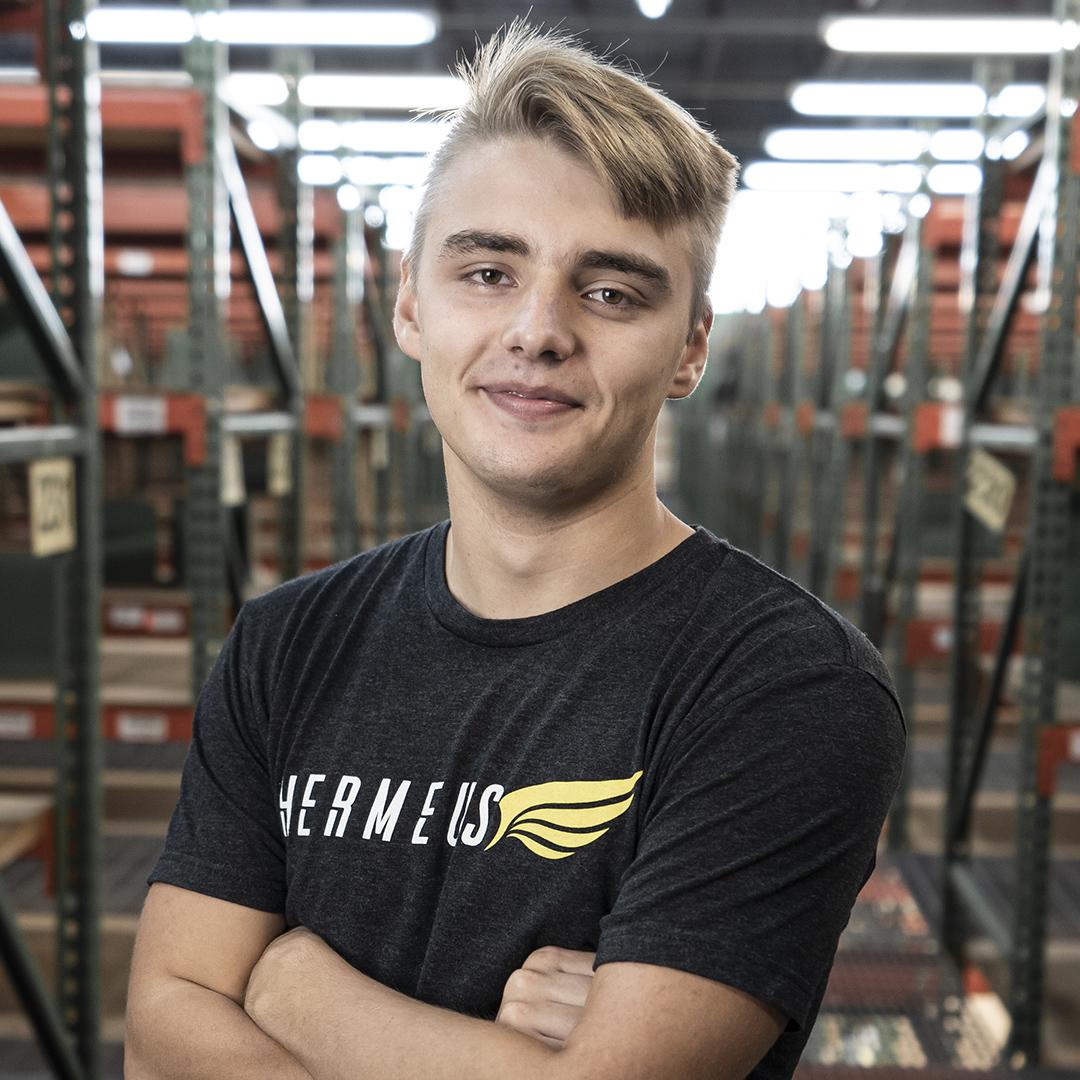
Pessi Laensirinne
Acoustic Instabilities in Variable Exhaust Length Combustor
Acoustic instabilities are commonly studied in combustion research as they affect the emissions, fatigue life, and noise of the combustor. However, predicting the acoustic modes in the combustor at a given operating condition is not straightforward as the acoustics are a function of various interdependent variables, such as combustor geometry and injector design. In this research sponsored by Siemens Energy, the length of the exhaust of the combustor is varied to study the effects of the exhaust length on the acoustic modes in the combustor measured by high-speed pressure transducers. It is worth noting that the novel ability to change the combustor exhaust length at real time has proven especially important in gathering acoustic data in an efficient way. The results found from the combustion rig at the Ben T. Zinn Combustion Laboratory are compared to the predictions of simple empirical models. This presentation will cover the current state of the acoustic instability research, correlation with predicted results, as well as plans for future testing.
March 16, 2023

Leah Manuel
Geometry Optimization for Improved Trajectory of Stardust Return Capsule
An entry vehicle depends on many factors to reach its target landing site. One factor is geometry, which includes parameters like the base radius, nose radius, and cone angle. This project analyzes how much the shape of the Stardust return capsule from 2009 affected its trajectory by optimizing its aerodynamic coefficients during its flight in the hypersonic continuum flow regime and finding how the landing location is affected. The equations for aerodynamic coefficient equations were coded in MATLAB, and the 3D non-planar equations of motion were numerically integrated using the Fourth Order Runge-Kutta method; optimization was performed with JMP software.
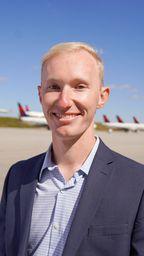
J. Coleman Pethel
Construction of a Pressurized Laminar Flame Burner for Laser Spectroscopy
In partnership with GEAviation, the focus of this research is to use laser spectroscopy to analyze mixture patterns, burn properties, and emission composition inside high pressure, high flow velocity environments to simulate that of a turbine engine combustor. The goal of this study is to further understand fuel-air mixtures and mixing patterns within such an environment to achieve more complete combustion resulting in better fuel economy. For this particular section of the project, a pressurized laminar flame burner was constructed at the Ben T Zinn Combustion Laboratory to test and calibrate the laser spectroscopy equipment and results before implementing spectroscopy procedures at the GEAviation facility in Albany, NY. This presentation will focus on the design, construction, and implementation of the laminar flame burner at Georgia Tech. Additionally, a brief update on the current status and results of the project and its implementation at GEAviation will be provided.

Dominic Troche
Laser Absorption Spectroscopy Methods for Measuring 2D Temperature Fields in Turbulent Flow
Measurements of the thermodynamic qualities of flow within a combustor are often limited in accuracy due to the inherent disadvantages of placing thermocouples in or near the working fluid. Non-intrusive measurements provided by purely optical methods hold a number of advantages over these more traditional temperature measurement techniques, in that line-of-sight data acquisition allows for near isolation from the extreme conditions characteristic of a pressurized burner, protecting equipment and preserving the sensitive behavior of the flow itself. The gold standard for high signal-to-noise ratio temperature readings from such environments is diode laser Wavelength Modulation Spectroscopy (WMS), a method that improves upon the more established Direct Absorption (DA) spectroscopy by offloading temperature data to the harmonics of a high-frequency sinusoid, which can be normalized to provide extremely robust data even in pressures that break down the DA approach. The objective of this project is to scale this technology massively, placing a matrix of lasers across the exit of a combustor and using the resultant two-axis data to reconstruct the two-dimensional temperature and pressure field of a highly turbulent cross-section of combustor flow.
March 17, 2023

Colin Burnett
Preparation Methods for In Situ Salt- and Regolith-Derived Martain Concrete
Crewed missions to Mars are anticipated within the next decade(s), necessitating the development of In Situ Resource Utilization (ISRU). Two major limitations (and opportunities for innovation) are 1) extraction of water-ice from the Martian subsurface and 2) development of building materials for Mars habitats. Carrying concrete and water on a spacecraft would be highly impractical given the high masses and volumes of such materials. Yet, both are necessary for short- and long-term human activities on Mars. ISRU extraction of water and the development of building materials on Mars, therefore, are compelling and vital problems to investigate. Here we present preliminary results addressing these two problems in tandem: exploring use of salt, an assumed byproduct from ice extraction, and regolith to make Mars concrete. Stable ice is present in the Martian regolith, primarily at high latitudes, where it is seasonally colder and more difficult for ice to sublimate. The ice table may be present at depths from <0.5 meters to 1.5 meters based on crater excavation values [1]. Sub-surface ice is most accessible in the northern high latitudes, present at a range of depths, but in some areas present only 0.1 below the surface [2]. Fortunately, substantial ice deposits also exist in mid-latitudes [1], which are more accessible and temperate environments. Such ice would contain some abundance of trapped ions and salts, given seasonal changes dissolving ice and concentrating small brine pockets, periodically freezing out salts or trapping ions [3]. Not only would these ice deposits likely contain high levels of impurities, but they also have some of the highest potential for modern biological activity on Mars, given the possibility of exploitable chemical gradients and liquid water (e.g., [4]).

Tabitha D'Amato
Strategic Locations and Resource Management in Cislunar Space
With the progression of the Artemis missions, NASA hopes to establish a human habitat on the Moon by the end of the decade. In order to begin planning this, strategic locations and available resources must be understood in order to create the best mission while limiting cost and weight. This presentation will go into detail describing these locations and readily available lunar resources and potential ways to manage them, hitting key concepts like the lunar South Pole and solar power.

Rishi Prabhuram
Single Surface Canopy Design
This presentation will focus on work done on parafoils having a single canopy and the ability to control turn rate and glide slope. This has applications in areas such as Amazon drone delivery.
March 30, 2023

Kaushal Gokare
CFD Analysis of a 2D Rotating Detonation Engine Model
Detonation processes are combustion reactions in which the flame front moves supersonically. Such processes can have much higher thermodynamic efficiency than the more familiar deflagration (subsonic combustion) process used in nearly all of today’s engines. As such, engines are being developed that utilize detonation as their reaction mechanism, such as Rotating Detonation Engines (RDEs) in which a detonation travels continuously and indefinitely inside of a circular annulus. Unfortunately, many of these engines suffer from combustion instabilities and other phenomena that are not well understood and are influenced by a wide variety of factors, including everything from the RDE’s injection pressure to its circumference. As such, the goal of the research discussed during this presentation is to develop in ANSYS Fluent a functioning

Jonathan Price
Applications of SysML and other System Modeling Tools to Aerospace Systems
Organizing paperwork, data, and other relevant information for an engineering project can be messy and challenging, especially in the aerospace industry, as projects can often take years to complete. Currently, projects are often organized in a slew of spreadsheets and papers; SysML consolidates the clutter and creates one file for all the information to be stored and worked on collaboratively. SysML is a graphical systems modeling language that can be used in any engineering field, and this presentation will focus on its effectiveness to various aerospace systems. Specifically, its collaborative, data calculation, and requirement verification abilities will be highlighted.

Carter Tegen
Aircraft Braking Performance and Supersonic Aircraft
The first part of the seminar involves a quantitative analysis of aircraft braking performance. Aircraft landing safety is one of the most important concerns in the aviation industry due to the large number of accidents related to runway excursions. While many papers have explored the relationship between adverse weather conditions and braking performance, this research looks at things from a quantitative perspective by analyzing empirical data. The second part involves research around a supersonic aircraft's theoretical design, the automation of 2d supersonic inlets and CFD analysis, and component mass modeling.
March 31, 2023

Jacob Evans
Optimization of Staged Combustors for Air Quality Considerations
For decades, increasingly stringent aviation emissions regulations have been driving the aviation industry to reduce its impact on local air quality, primarily limiting production of nitrogen oxides (NOx) and carbon monoxide (CO). Recent interest has formed around the potential for developing hybridized propulsion systems that can reduce the large turndown ratios in modern engines, thereby improving emissions and fuel economy. As part of a NASA ULI project for developing such a system, the design of a novel clean sheet combustor is required. Existing combustor designs, including lean premixed (LPM) and rich-quench-lean (RQL) combustors, focus on minimizing regulated emissions but generally do not allow for the operational flexibility required by hybrid systems. Using detailed Jet-A chemistry, one-dimensional reactor networks were developed using Cantera and Python to model novel axial air and fuel staged (AFS) combustors. These computational models were used to study the impact of different staging designs on NOx emissions and operational capability across a large suite of potential conditions. Optimizing combustors for air quality objectives will have different combustor design implications, many of which will continue to be explored through further modeling and experimental testing.

Pablo Orozco
Behavior Systems Analysis (BSA) and Failure Modes and Effects Analysis (FMEA) of a Controllable System
When designing a system, it is the engineer's responsibility to understand and analyze the system components, the interactions between components, and the system constraints and limitations throughout the system life cycle. Model-based systems engineering (MBSE) offers a robust methodology that can be used to define system requirements, behaviors, and structures. This project focused on developing the behavior models of a controllable system. To do this, a variety of diagrams were used including activity, sequence, use case, and state machine diagrams. These diagrams were used to define the boundaries of the system, the users of the system, and the purpose of the system. In addition, a failure modes and effects analysis (FMEA) was performed to assess the system safety level and identify possible failure modes in the system design.

Joseph Rouse
Guidance, Navigation, and Control for the OrCa2 12U CubeSat Mission
dOrCa2 is a 12U CubeSat currently being developed in Georgia Tech’s Space System Design Laboratory under Dr. Brian Gunter. Following its predecessor of OrCa1, the OrCa2 satellite will play host to many exciting experimental payloads including a star tracking imager, horizon sensors, as well as custom EPS and battery packs that can be used on future CubeSat missions. Due to past developments, the mission has been given a sun-synchronous orbit which allows for many exciting opportunities in the area of GNC. Utilizing three magnetometers and one reaction wheel we plan on achieving all desired control including detumbling, sun pointing, and an earth-facing flip maneuver.
April 6, 2023

Avik Banerjee
Digital Engineering and Modeling with SysML for Aerospace Applications
Digital engineering has revolutionized the aerospace industry by using integrated digital technologies to accelerate the development and delivery of complex systems and the design of missions. Model-based systems engineering (MBSE) has become a key component of digital engineering, with Systems Modeling Language (SysML) being a popular graphical modeling language that supports MBSE activities such as requirements analysis, design, verification, and validation. SysML enables aerospace engineers to create and manage system models that capture the structure, behavior, and interactions of system components and stakeholders. This language also supports formal methods and reasoning to ensure the consistency and correctness of system models. In this research project, we will leverage the power of SysML software, MagicDraw, to model a space mission inspired by NASA’s FireSat Mission. Our primary focus will be on the modeling and definition of the ground station, as it is the key element behind the mission's success. Additionally, we will demonstrate how SysML models can be transformed into Modelica and SIMULINK to take advantage of the data analysis capabilities offered by different software. By doing so, we aim to showcase the versatility and power of SysML for model-based systems engineering.
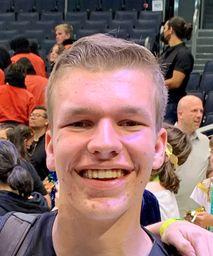
Braden Kerstin
Combustion Instability for 3D Printed Injectors
Combustion instability is one of the most important topics in jet/rocket propulsion, and plays a key role in system design, optimization, and component effectiveness. Siemens Energy requires combustion instability data for a wide range of operating conditions including exhaust chamber volume and mass flow. Testing is to be conducted with a set of 3D printed fuel injectors provided by Siemens Energy, and a specialized experimental testing rig is being constructed to vary exhaust volume and other parameters during a single test. This data will eventually be used for energy generating engines for commercial power plants.

Catherine Schlabach
Deep Space Network Interface with University Space Operations
The Deep Space Network (DSN) is an international collection of radio antennas operated by NASA. This study follows staffing, scheduling, and strategic mission operations in conjunction with the DSN. Specifically, this research presents the relationship between the DSN and a CubeSat project with a team of university students. In order to fully support operators who interface with the DSN, effective collaborative development and project management is employed. The schedule demand that the DSN faces from multiple space missions, maximum allotted project time, and minimum time between radio transmission are limiting factors for determining when contacts can be scheduled. Contact planning is considered in the form of scheduling and communicating Operational Procedure Deviations. OPDs are deviations to default parameters that configure the DSN assembly. Tactical connection with the DSN is defined in four ways: operators to DSN personnel via phone line, DSN station to the Lunar Flashlight Iris Radio, Iris to DSN station, and DSN signal to mission operations data system. The discussion follows contact planning, communications protocol, connection anomalies, and the challenges experienced.
April 7, 2023

Jordan Kalatchev
Software & Integration of SSDL’s OrCa2 and WEBS Missions
While we often hear about drones and self-driving cars as examples of autonomous systems, satellites too are autonomous which need to manage their state, sensors, and actuators with limited influence from operators on the ground. My research has focused on developing the software that handles our CubeSat missions. It runs on a microprocessor and handles hardware interfaces, mission states, communications, and power distribution among other things. In recent months, I’ve taken a lead role in integration, building up a flatsat, fabricating boards, and working towards day-in-the-life testing.

Saikrishna Manojkumar
Optimal Estimation Techniques for Satellite Constellations in the Cislunar Domain
An renewed push for lunar exploration by both public and private space entities requires increased knowledge of the numerous satellites and orbiting bodies in the cislunar domain between the Earth and Moon. This expects the development and implementation of space domain awareness infrastructure to perform surveillance in the form of observing bodies. However, in an area of space without commonly used Earth navigation tools like GPS, alternative forms of navigation for these observers need to be explored for both feasibility and performance analysis. This research project performed preliminary analysis to finalize navigation techniques for this cislunar domain, compared measurement model techniques utilizing linear covariance analysis, and finally implemented these navigation techniques in an Extended Kalman Filter.

Dyllon Preston
Concurrent Optimization of Gravity-assist Low-thrust Trajectory with Power and Propulsion Subsystem Sizing
Electric propulsion systems provide the necessary high specific impulse to make many deep space missions efficient and feasible. However, the design of low-thrust trajectories can be challenging due to the coupled nature of the power and propulsion sizing design problem, and the spacecraft mass and acceleration trajectory design problem. This seminar discusses an approach for coupling the sizing process of the power and propulsion subsystems into a direct-transcription-based trajectory optimization problem, enabling a concurrent trade-space exploration of both the trajectory and the spacecraft design. This approach is then applied to a theoretical 5,000 kg Earth-Mars transfer cargo mission trade study, where optimal mission designs are found using a pseudo-global gradient-based approach.
April 13, 2023

Kyle Cangelosi
Complexity and Health Monitoring of SysML Models
With the ever-increasing complexity of technology, the role of systems engineering has become paramount to ensuring program success. Model-based systems engineering (MBSE) through the Systems Modeling Language (SysML) allows for the creation of unified digital models representing the entirety of massive systems. However, as these systems continue to grow in complexity sometimes greater than tens of millions of elements, users can run into practical hardware limitations while loading and modifying these files. This presentation will discuss methods of measuring model complexity and gauging overall system model health.

Zachary Connor
Model Complexity Visualization and Scripting Implementation with MBSE
Not only is visualizing models visually satisfying, but it is also incredibly informative from a model-based system engineering perspective. The analysis performed brings insight to SysML 101 students model development habits and ways to improve them. It’s use in industry is also crucial- models are massive and complex all of which need methods to improve model efficiency for all. Throughout the research, scripts in java and python were developed to help analyze models in the future.
Scripting usages when combined with MagicDraw OpenAPI brings forth leverages many originally wouldn’t think is possible. Scripts bring speed, flexibility, and efficiency all to a model in matters of seconds. In this presentation, scripting was used to autonomously access Teamwork Cloud- a style of server used by many in the industry. Autonomous Teamwork Cloud access is a field which has not been journeyed often due to its inherent complexity against typical local servers.
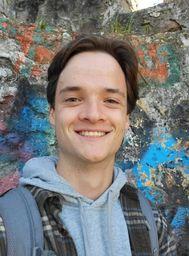
Andrew M Wood
Joint Estimation of Antarctic Glacial Isostatic Adjustment and Ice Mass Change
Numerous surface and solid earth processes influence the dynamics of ice in Earth’s polar regions. As urgency to understand the effects of climate change and sea level rise grows, it is essential to characterize these processes and their contributions to ice sheet mass balance, surface height, and extent. Glacial isostatic adjustment, or GIA, describes the elastic response of the solid Earth due to ice sheet dynamics. Due to the large number of input models that are inaccurately known, current GIA estimates are plagued with significant uncertainty that makes them the largest contributor of uncertainty within mass balance estimates. Gravimetry satellites GRACE and GRACE-FO are able to observe total mass changes but require GIA correction to estimate ice sheet mass changes. In this work, GRACE-derived mass change estimates are supplemented with satellite altimetry and regional climate modeling to simultaneously estimate GIA and ice mass change trends over the Antarctic continent. Altimetry datasets from IceSat and IceSat-2 are used to constrain absolute volume, allowing the separation of GIA and ice mass loss in presence of a density model. A firn densification model and corresponding surface mass balance model are also utilized, incorporating simulated spatial and temporal variations of short-period surface processes.
April 14, 2023

Divya Kalaria
CFD Analysis on Open Rotor Concept
Using Star-CCM+ to analyze efficiency of Open Rotor concept at certain Mach numbers and advance ratios. Examine pressure coefficients throughout the geometry and determine the best possible rotor blade beta angle to maximize efficiency. Change beta angle of swirl recovery vane (SRV) to determine the best possible angle for high efficiency for baseline open rotor case. Change beta angles for both rotor and SRV at the same time to determine the best possible angle suited to provide high efficiency. Verification was used for the efficiencies by comparing them with low-fidelity code to ensure the values determined from high-fidelity code result in similar values.

Lonnie A. Webb
Flow Visualization of Effusion Cooling in Gas Turbine Engines
This study examines effusion cooling in gas turbine engines, specifically focusing on the impact of various cooling plate geometries on flow characteristics. The study employed a nonreacting flow with smoke to enable the visualization of flow patterns through the use of Mie scattering. Qualitative analyses were carried out to determine the effectiveness of each geometry in promoting efficient effusion cooling. By comparing and contrasting the distinct flow characteristics associated with different geometries, this research aims to lend insight into the effect of different geometries on performance.

Reid D. Fly
Acoustic Operability Mapping of Scaled Can Combustors
Acoustic instabilities – large-amplitude excitations of the natural frequencies of a combustor – have plagued combustion for decades. From steam boilers to the F-1 rocket engine, these instabilities can have consequences ranging from excessive noise and emissions to catastrophic structural failure. As the gas turbine combustion industry continues to push the boundaries of efficiency and power, the operational limitations imposed by combustion acoustics have become more important driving factors for design and operating conditions. In this experimental campaign, we endeavor to explore the impact of design considerations and operational methods of a scaled can combustor centered around novel additively manufactured fuel injectors. Through the use of a variable acoustic length, we are able to efficiently sweep a range of natural frequencies and measure the corresponding system response. This will allow us to derive an understanding of which control parameters drive these swirlers’ forcing frequencies in order to inform design and operation decisions when the hardware is deployed in real-world energy generation environments.
April 20, 2023

Walther Chong
First-Principles Reduced Order Method to Estimate UAS Rotor Performance
Due to the limited information available on commercial-off-the-shelf (COTS) unmanned aerial system (UAS) rotor data and the need to be able to predict the performance of UAS vehicles, it is often desirable to estimate performance data based on easily measurable physical quantities of rotors.
Based on a first-principles blade element theory method, an estimation of the performance of small rotors commonly used in UAS applications is being explored for moderate flow speeds and low solidity. UAS proprotor experimental data as well as parametrized data developed by Gill & D’Andrea at ETH Z¨urich was used in order to develop a rotor estimator model, yielding rotor forces and moments to quantify the performance of the rotor. Further work to be completed include adding duct correction factors for estimating the influence of the addition of a duct to open rotor systems to generate a ducted rotor system.

Savanna Scott
Obstacle Avoidance Path Planning Algorithms
This presentation explores three different path planning algorithms. The algorithms are: rapidly-exploring random tree (RRT), artificial potential fields (APF), and sequential convex programming (SCP). RRT uses random samples within the search area and grows a tree of paths towards the goal. APF creates a negative potential field around the UAV and obstacles as well as a positive field around the goal. This causes the UAV to be attracted to the goal while repelled from the obstacles. Finally, SCP creates a sequence of convex subproblems to find the shortest path to the goal. All three algorithms were implemented for the same field of obstacles and the results of the paths they found are compared and contrasted at the end of the presentation.

Ethan Sirak
Analysis of the Sensitivity of eVTOL Performance due to Size
Using software developed at NCAEL, COMPASS (COMPlex Aerodynamics of Simple Shapes) and GTABB (GT Aerodynamics of Bluff Bodies), two sizes of an eVTOL quadcopter were evaluated to determine the effect of vehicle size scaling on the vehicle’s performance. COMPASS generates a range of aerodynamic coefficients for a defined vehicle geometry, and GTABB is then used to simulate flight and generate performance metrics for analysis. Both a full-scale and half-scale model were evaluated and compared. This project is ongoing, with current work including the inclusion of different canonical shapes, comparison of COMPASS data to higher-fidelity methods, such as CFD, and to experimental data from the Army and NASA.
April 21, 2023

Hugh (Ka Yui) Chen
Tunable Diode Laser Spectroscopy
The Tunable Diode Laser Spectroscopy Lab is an experimental branch for the graduate aerospace propulsion lab, specifically focused on diode laser spectroscopy and other relevant applications. The lab offers students the opportunity to participate in designing the experiment procedure through the construction of brand-new diode laser testing rigs, calibration of equipment, data acquisition along with analysis, and more. Students are able to gain a comprehensive understanding of the fundamental theorem of diode laser technologies, and its various applications in aerospace.

Michael Keraga
Determination of Flame Lift-Off Length and Ignition Delay Time of a Direct-Injection Diesel Spray Under Various Chamber Conditions
Under quiescent conditions, the flame of a direct-injection diesel spray will stabilize at an axial location downstream of the injector face. The distance from the flame stabilization point to the injector face is defined as the flame lift-off length. Additionally, the time interval between the start of injection and combustion is defined as the ignition delay time. With the growing demand for low emission engines, intensive research into the auto-ignition combustion process in diesel engines suggests that these two quantities play a significant role in emission formation processes. Recent studies have shown that measuring ultraviolet light emitted by OH* (OH in its excited state) chemiluminescence is the optimal imaging technique in determining lift-off length. Using a CCD video camera, this study will use line-of-sight data of OH* chemiluminescence to determine lift-off length and ignition delay time of a direct-injection diesel spray in a fixed-volume combustion chamber at various chamber conditions.

Yuga Ojima
Machine Learning Approaches for Categorizing Daily Interior Temperature Trends in Campus Buildings
The research presents an algorithm pipeline that employs unsupervised machine learning and supervised deep learning techniques to detect daily interior temperature trends in campus buildings. The lack of a reliable classification approach for daily interior temperature data from diverse campus buildings had hampered advancements in sustainable infrastructure. The study's findings provide valuable insights into interior temperature behavior, including seasonal changes, and can help optimize building energy efficiency and sustainability. The pipeline's implementation could be extended to different kinds of buildings to uncover distinctive temperature patterns and opportunities for energy efficiency improvements. The research demonstrates the potential of machine-learning techniques and time-series data to address classification problems in infrastructure management and pave the way for future research in this area.